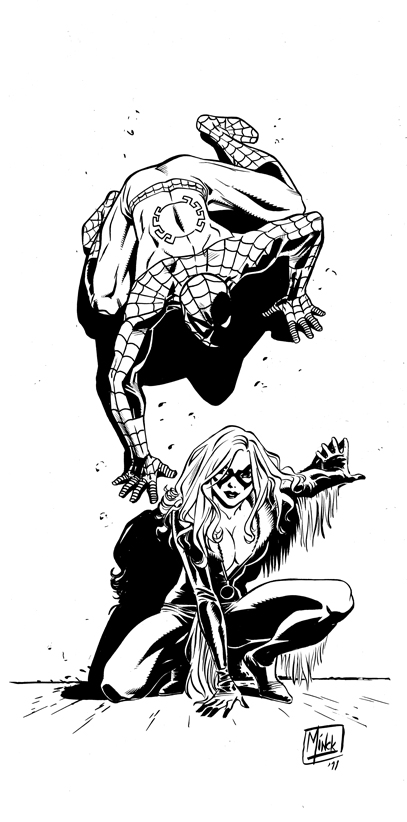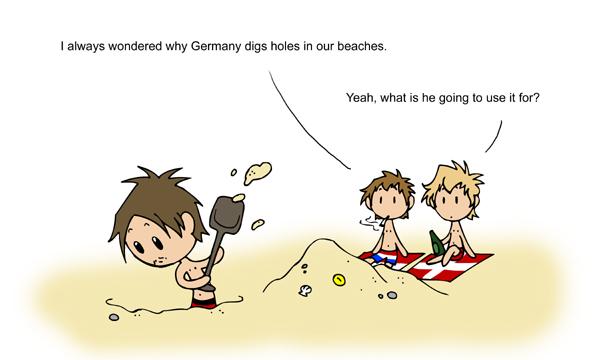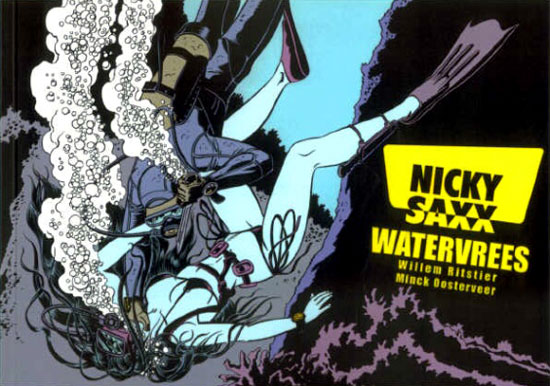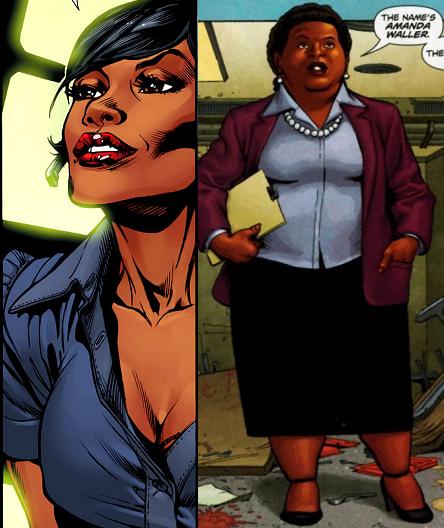
Via Michael Minneboo comes the news that Dutch cartoonist Minck Oosterveer has died in a motorcycle accident at age fifty. A sad enough death for anybody, but even sadder as it came just at a point in Oosterveer’s career when he had recieved the critical acclaim of his peers in the Netherlands, if not the commercial succes he wanted. At the same time however, after several years of effort it seemed that he had finally broken through in America, getting assignments from Boom! Studios as well as Marvel Comics. He had recently done the artwork on Mark Waid’s Victorian detective series Ruse as well as an issue of Spider Island: Deadliest Foes.
That latter was something of a dream come true for Oosterveer, one of whose earliest professional pieces had been a newspaper style Spider-Man strip for a dayplanner published by the then Dutch license holder for Marvel Comics, way back in 1989. Oosterveer had been trying to break into the American comics market for a couple of years now, as possibilities for the kind of comics he drew were drying up fast in the Dutch markets. As he had put it earlier this year:

Marvel pays royalties and the money you start with there is more than you could earn here. The only ones still paying a page rate is Eppo strip magazine. But there you get half of what I’m going to earn at Marvel per page. In the Netherlands I really can’t ake a living from comics anymore. You can’t blame Dutch publishers for it, because album sales here are just too low.
The lack of commercial succes in the last few years in the Netherlands, which also included the loss of his daily adventure newspaper strips in De Telegraaf did not mean Oosterveer wasn’t appreciated by his colleagues and readers. Only this year he won the Stripschapsprijs’ lifetime achievement award, the highest award his peers could give him. He was praised for the very qualities that made his work uncommercial in the current market place, his focus on doing realistic strips in a country that was always more into the cartoonesque and funny side of comics.
Artwise, Minck Oosterveer had always been influenced by the classic American adventure strip cartoonists, people like Milton Caniff, Alex Raymond and Will Eisner. His style was loose and fluid, with a strong feel for black and white contrasts, just as you’d expect from somebody with those influences. He managed to be recognisable and interesting even in the severly limited space of the daily newspaper strip, where he’d be lucky to have three small, cramped and badly reproduced panels. His work may have been taken for granted and not always been appreciated by the general audience, but his peers knew his worth.
I didn’t know him personally and it’s only been recently that I realised how good he actually was. I regret not getting the chance to tell him in person.




